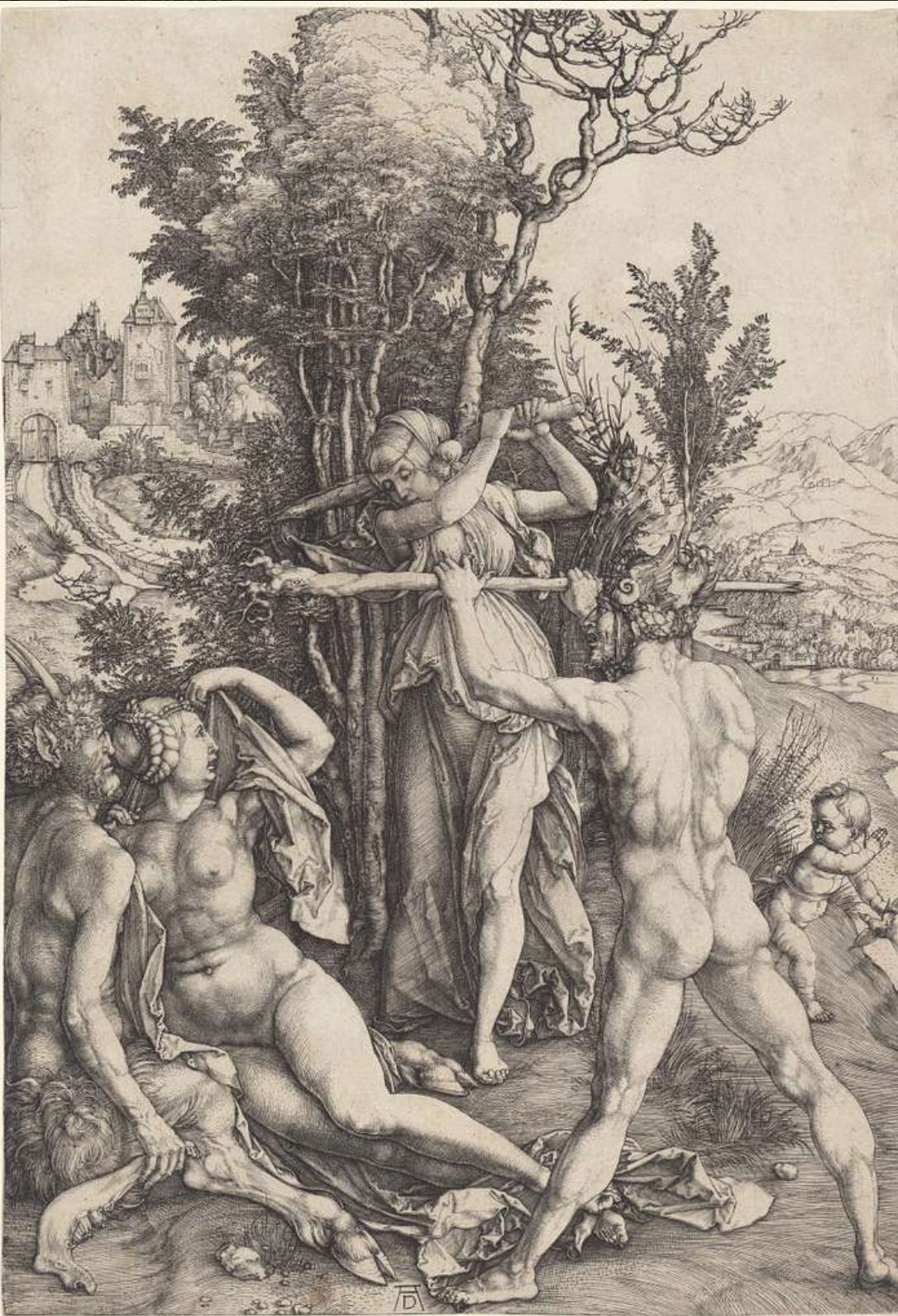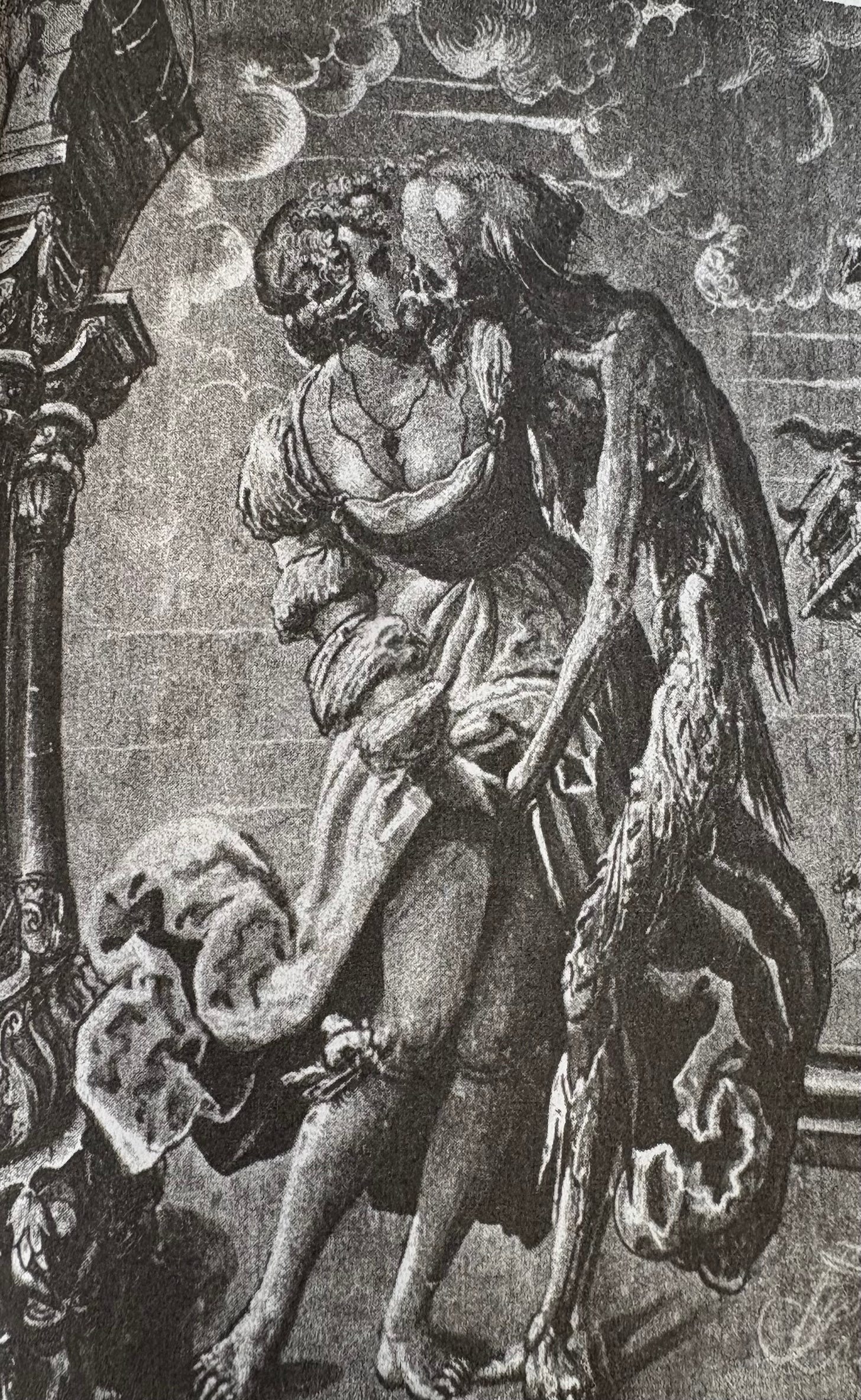The Frisson of the Threshold: Liminality, Aporia, and the Sorcerous Turn
In occult circles, few concepts are as frequently invoked—and as little understood—as liminality. Often romanticized, liminality becomes an easy banner for mystery, transition, or ambiguity. But in being invoked too casually, it is rendered hollow. True liminality is not comfortable. It is a place of disjunction, of paradox, and of uneasy, charged potential. Its power lies not in being merely “between,” but in becoming the very axis of turning—what Andrew D. Chumbley called khiāzmos: the meeting and crossing of antithetical poles.
Where we find aporia—those philosophical impasses where thought collapses into itself—we find the sorcerous current most alive. Not in resolution, but in the living, writhing space where opposites touch and resist. In that resistance, in the turn and counter-turn, the sorcerous self is not dissolved but distilled. It is here, in that frictional gap—the frisson of null-point—where power emerges.
The true liminal is not a corridor but a crossroads. And not merely the sort where paths diverge and choices are made, but the darker, more fatal kind—the crossroads as terminus. The one where each road cancels the others, where to stand is to hover between becoming and annihilation. This is not the whimsical ‘between worlds’ of overplayed pagan tropes. This is the ordalium—a place of trial, of soul-weighing. Of terror and gnosis.
Chumbley was a master of this art. He understood that magic is not born in safety, but in the cut and drag of contradiction. To be truly liminal is to hold the tensions of irreconcilables within the body, to live in dynamic stillness—neither ascending nor descending, neither alive nor dead. To step into the sabbat not as a party but as a crucible.
When we speak of crossroads in witchcraft, we often speak of potential—where all roads begin. But what if we look again and see not the potential of beginnings, but the violence of endings? The stasis at the centre where movement dies, where opposites annul one another and something other emerges—beyond dualism. Here, in this null-point, agency is born. Not the agency of the self acting upon the world, but of the self transformed by the act of turning.
That turn is power.
Cain is a potent exemplar of this aporatic condition. Cast between divine and profane, he is neither wholly damned nor wholly saved. He is punished yet protected, marked yet made mythic. He stands between Abel—the obedient man of clay—and Seth—the man of light. Like Samael, Cain is both angel and adversary, divine and exiled. He is a paradox enfleshed.
In my latest work, I explore this same dynamic through Judas Iscariot—a figure who, like Cain, occupies a liminal and profoundly charged space. To the canonical Christian tradition, Judas is villain, traitor, cursed. And yet the entire machinery of salvation turns upon his betrayal. Without him, there is no passion, no crucifixion, no resurrection. He is necessary. He is despised. He is destined and damned.
To some early Gnostic Christians, Judas was the only disciple who understood. He was the one who accepted the burden of betrayal as sacrifice—stepping into the role that would damn him in history and apotheosize the Christ. His is a profound and tragic liminality: caught between fate and free will, between love and betrayal, between human agency and divine necessity.
This is the space the sorcerer seeks—not to escape contradiction, but to become it. To live as Cain, to choose as Judas. To know that the act of turning, not the direction of it, is what births gnosis. The crossroads is not only where choices are made, but where one becomes the one who chooses—again and again, in full awareness of cost, collapse, and consequence.



